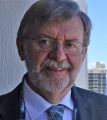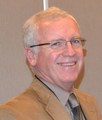ASSET MANAGEMENT BC NEWSLETTER (Summer 2018): Spall but Mighty: A Closer Look at the Service Sustainability Assessment Tool in Action – Interview with Doug Allin, CAO, Township of Spallumcheen

“It can be daunting, particularly in small communities with limited staff. That’s why you need to start small. Just jump in and get going. Pick one aspect to focus on and start with a plan. One of the first things I do in any community is start with the education – from the inside out. We can’t embrace Asset Management if our decision-makers don’t know what it is, why it’s necessary, and how it will benefit our community,” stated Doug Allin. “It all starts with a conversation, and asking: Is that what we want for our community?”










